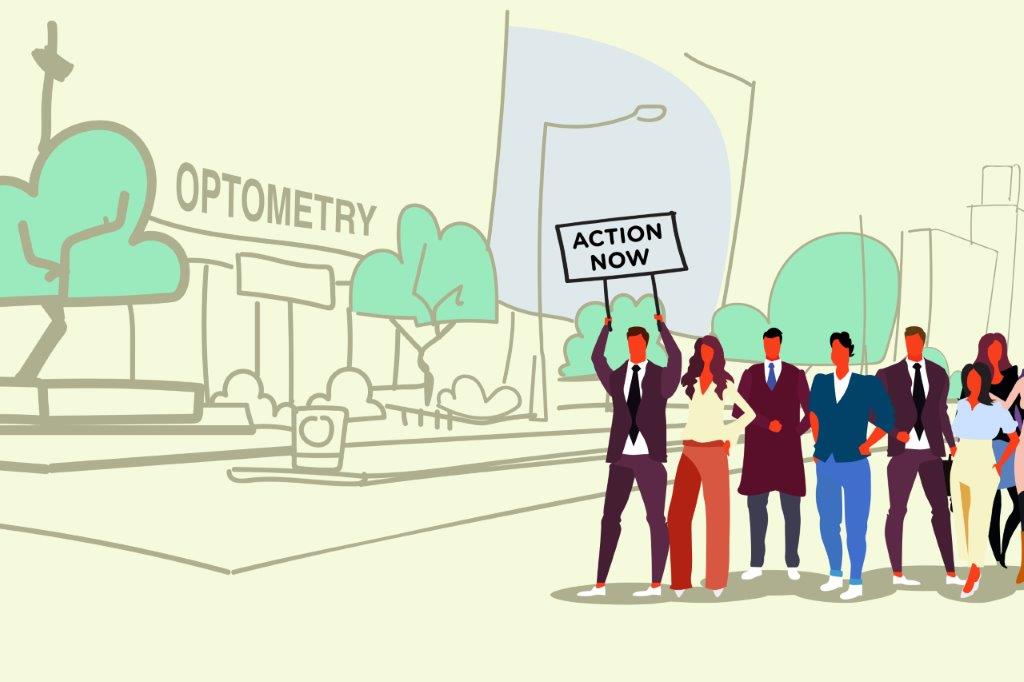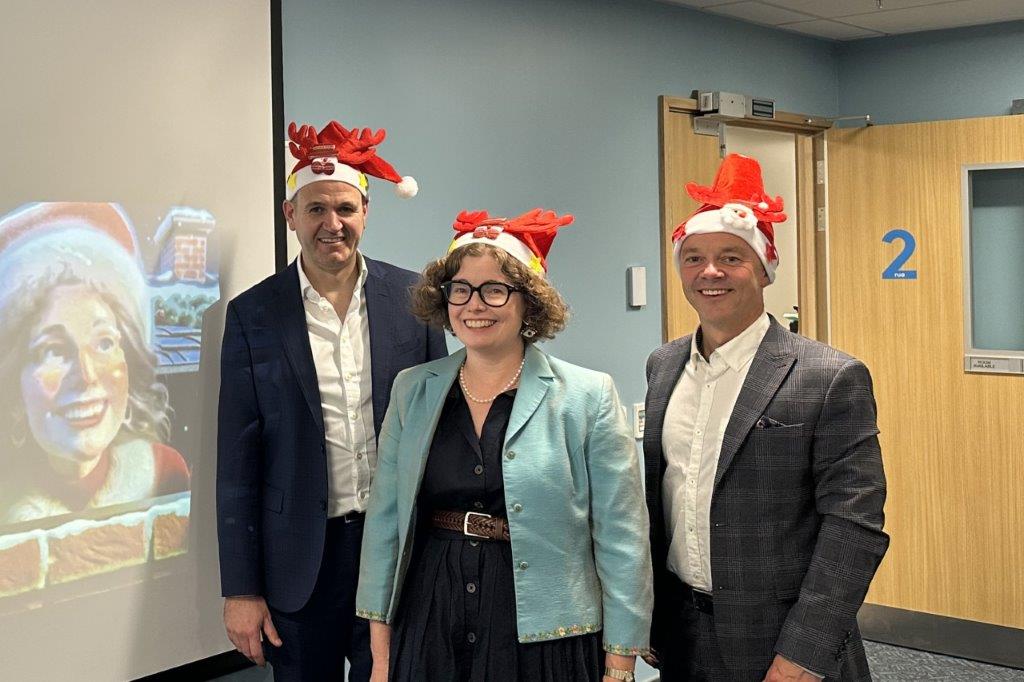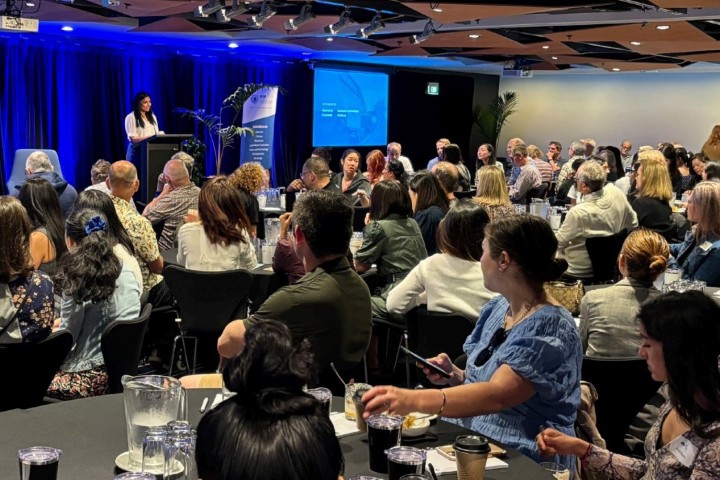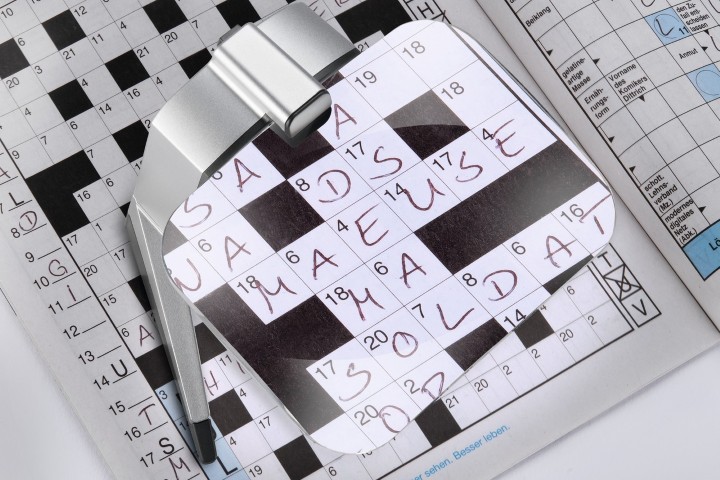Wait… you want what?!
Fierce rivalry and battles of wit, experience and education have been raging for more than a century. Often characterised by the odd bruised eye, bruised ego and chipped lens, these intense wars have had their fair share of casualties and trauma over time.
North vs South, you ask? India vs Pakistan? All Black vs Springbok? Lindsey Buckingham vs Stevie Nicks? No. Not even close. This surpasses those battles hundredfold! It’s the age-old war between practice and lab.
I sometimes believe eye care practitioners think lab people are mean, obstinate, rude and uneducated! While lab people think practitioners slept through their lectures, are hard of hearing and make ridiculously unreasonable demands. Having been on both sides of this proverbial fence, I would say that one of these warring factions is absolutely and unequivocally correct.
Which one? Well, naturally the one you are on at this very moment in time, of course.
Given our daily stresses, demands and struggles, compounded by the odd pandemic, it’s easy to forget we don’t work in a vacuum. We often assume everyone is on the same wavelength as we are and we can get quite irritable, perhaps even rude, when we are misinterpreted or perceive our excellent judgement is questioned.
For example, one story I recall went something like this: a hardworking lab technician called a practitioner to ask if they wanted the Transitions lenses they’d ordered in grey? The answer, accompanied by a barrow full of sarcasm, was, “Well if we wanted another colour, we would specify it on our order, wouldn’t we?”
We usually associate photochromic lenses in general with grey by default, but nowadays most lab technicians in my humble opinion would say that’s an outdated position to take, given all the colours currently available to us. Should that lab staff member have assumed the product to be grey, Mr Murphy (that pioneer of acknowledging that if anything can go wrong, it will go wrong) would have ensured it actually should have been brown; or green, amethyst, sapphire or even amber! And, that same lab technician would probably have been on the receiving end of quick, but unpleasant phone call about their lack of attention to detail and checking!
Conversely, another story I recall involved a lab colleague berating a poor practitioner because of the prescribed prism on their spectacle order, which was prescribed in the same direction, vertically, and that was simply not done! To their credit, the more patient eye care practitioner kindly explained the benefit of a bilateral equal-power, base-up “yoked” prism improving straight ahead vision for a patient suffering from acute ankylosing spondylitis, which often results in a forced chin-down posture.
So, if we could resolve the age-old conflict here, we’d be smiling a lot more and wanting to commit grievous bodily harm a lot less. How, you may ask? Well, like this:
DOs and optometrists
- Please understand that when a customer services-person at a lab calls you with a question, it is always as a precautionary concern. They don’t like bugging you because they do know how busy you are, but they want to get it right, the first time, because that in itself is sometimes difficult enough and remakes, especially urgent ones under lots of pressure, usually result in, well, more remakes
- We all make mistakes, and history teaches us that asking about mono PDs of 28 right and 35 left is not really that absurd, even if this unique patient does have a few physical traits in common with a chameleon. Remember lab technicians don’t know that; they just see a piece of paper with a dispensing anomaly. So, please be patient with their “silly” questions
- Please complete your spectacle orders in full. When we are in the zone, trying to make you the best pair of spectacles we can, stopping every two minutes to ask about tint colour, saturation or missing height; pd or lens type; or refractive index, coating or edge polish, only serves to slow down your order, and lab people know how annoying that is for you
- Lab staff also understand that a person who is -12.00 OU is dependent on their spectacles, so they endeavour to prioritise such emergency orders. This may also just be the opportunity you need to re-enforce the importance of a second/back-up pair for such patients. You wield power over that patient that lab staff do not and, if you ask nicely, you may be surprised at how happy some lab people are to give you a really sweet deal on a second pair to aid you in this enterprise and help overcome cost objections, especially given Mr Murphy’s first rule of spectacle making: if it absolutely cannot go wrong, adding pressure to that order will ensure it does
So, be kind to your lab family. Yes, you have a screaming, irate patient in your face embarrassing you in your waiting room, but lab staff often have 15 clients with that same screaming patient and are desperately trying to resolve all your issues. In labs, just like in practice, pressure causes mistakes. Lab technicians can usually perform the impossible in under an hour or so, but divine miracles may just take just a wee bit longer…
Lens laboratory staff
- Practitioners are not dumb, even when they leave critical information off an order. They are under immense pressure to get a refraction perfect, decide on the correct prescribed lenses, include the fashion element with the designer frame, convince the patient to pay a small fortune for them, ensure they come back from the lab correct, dispense them to the patient’s satisfaction and hope everything turns out OK. The buck stops with them!
- Get to know your practitioner clients, not just personally to strengthen the business relationship, but professionally. Learn what they prefer to prescribe and why. Look for patterns and make notes. If you keep asking the same question and the answer is always the same, stop asking the question
- We all make mistakes… man up, own up and fix up, and if the mess was really big, make amends. Mistakes are a perfect time to reflect, learn, improve and upskill. Sweeping it under the rug or blaming others helps nobody and merely exacerbates a problem
- Please read the spectacle order in full Yes, they’re all written in different formats and layouts, some neatly printed (the best) and some illegibly handwritten (no comment) but quite often the info is all there if you look hard enough, and if you know your customer well…
So, be kind to your DO and optometrist. Yes, you have 15 optometrists on the phone about their screaming patients, but they have one, in their face, right now, threatening to do all manner of things, and it really isn’t pleasant. In practice, just like in labs, pressure causes mistakes. You need to worry about making a product according to strict specifications, but practitioners must ensure they work.
One big lens, practice family
We all work in a field where we deal with small error margins that could make big differences. We all work under immense pressure to get it right first time and manage our customers’ sometimes lofty expectations.
We all understand that very few patients walk into an optometry practice to buy spectacles with the same spring in their step as a person going to buy a new car, new TV or pair of designer heels. That excitement is much harder to replicate in our industry, as the only tangible they can relate to in a cost sense is the fashion element. The lenses, which are often the most expensive element in a new pair of glasses, are an intangible, abstract concept for many patients, especially new progressive wearers, who are not happy to be reminded about how old they are getting. So, most patients are baffled about how the two little pieces of plastic that they cannot even see (thanks to modern multicoat technology) can cost as much as they often do.
But, if we’ve all done our jobs well, the benefits these same patients feel when they finally put on their new spectacles often erase their original apprehensions and cost objections. So, be kind to your lab guys; to the practice staff you support. It’s sometimes hard to understand the pressures on the other side of the fence if you have never been there.
The views expressed by Chalkeyes are his or hers alone and not necessarily the views of NZ Optics or eyeonoptics. If you wish to comment on Chalkeyes’ views, please email a brief letter to the editor at info@nzoptics.co.nz for consideration. If selected for publication, letters may be edited for space, style, grammar and clarity.


























